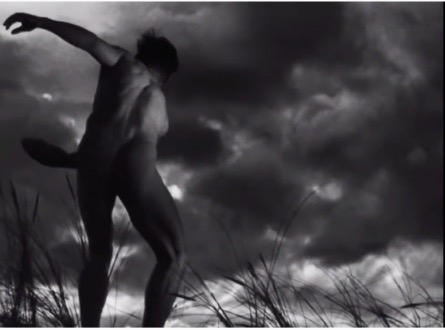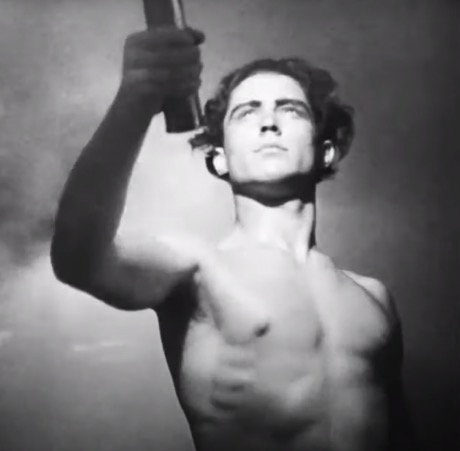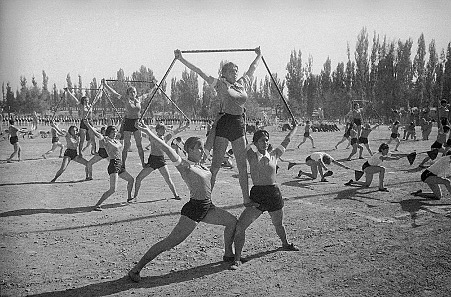Seminar Blogs
“Plato’s Back: Translating Greek philosopher’s ideas into “new politics of German stage”” – Olga Efremova

Plato’s Back
The second session of the Transmission in Motion 2021-22 series contextualized philosophical and cultural appropriation of Plato in German thought in the period leading to German industrialization and the rise of National-Socialism (Utrecht University 2021). Paul Ziche situated the translations and interpretation of Plato’s works against the backdrop of the publishing milieu of the time, tracing the journey of Plato’s ideas into “new politics of German stage” (seminar notes). Mauro Bonazzi echoed Ziche’s exploration of “Plato’s many faces” (Bonazzi 2021, seminar notes) by showing how Werner Jaeger and Kurt Hildebrandt transformed the philosopher’s “contemplation of eternal beauty” (Hildebrandt 1933, 218, as cited by Bonazzi) into the ideological backbone of the Third Reich. Bonazzi used Olympia’s opening visual sequence as an invitation to consider the representation of the perfect human form in the cultural context of Ancient Greece and the lingering effect of such imagery in contemporary cinematic imagination. This blog is titled Plato’s Back as a reference of the image of the athlete from Leni Riefenstahl’s 1936 film Olympia, but it also can be read as “Plato is Back”: a deliberation on the recurring resurrection of the platonic ideal in revanchist, nationalist and authoritarian narratives that celebrate the ideal human form as the ultimate allegory for the power of the state (Figure 1).

Figure 1. A still image from Olympia by Leni Riefenstahl (1936).
In his 1935 essay “The Work of Art in the Age of Mechanical Reproduction” German cultural theorist Walter Benjamin put in the spotlight the problematics inherent in the aestheticization of political narratives. In this light, Plato’s Back can be also seen as an allegory for a cinematic experience that distracts from the essence of the underpinning ideological framework. Rudolf Laban’s movement visualization in icosaedric dancing harks back to the archived images of the USSR grassroots athletes performing acrobatic feats in a schematically constructed fashion (Figure 2). The uncanny parallels between the imagery presented in the seminar and the concurrent 1930s visual narratives of Soviet utopian men and women call for the consideration of the role of curated body image played in totalitarian visual narratives. In his discussion of Kulturpolitik by F.H. Ehmke (1947), Ziche mentions the motto from Goethe, the writer who according to Mikhail Bakhtin (1986) “was averse to words that were not backed by any actual visible experience” (27). Goethe’s creative image of emerging man “invested with visual from” (Bakhtin 1986, 27) seems only too gladly appropriated by the ideologies of state powers that repackage the bildungsroman visual narrative “of man’s essential becoming” (20) into Goethe’s “fatal summoning of ghosts” (33).

Figure 2. Female gymnasts at demonstration performances.
Photo by M.Z. Penson, photo correspondent of the newspaper “Soviet Vostok”, the 1930s.
A debate that emerged during the workshop around the possibility to analyze Olympia’s mythological imagery outside of the film’s known historical context echoed Massumi’s take on affect as an “emergent dimension of body/matter, in its determination to be determined” (2021, xvi). The question that begs answering is whether our understanding of the place of Plato’s translation within the early 20th century’s German tradition of Bildung is not better served by the contemporary advances in affect theory and the studies of the transmission of affect. The third and final interpretation of Plato’s Back then well could be “a self that turns on itself” in the affective “felt reality of the abstract” (Massumi 2021, xvi).
References
- Bakhtin, Mikhail Mikhailovich. 1986. “The Bildungsroman and Its Significance in the History of Realism (Toward a Historical Typology of the Novel).” In Speech Genres and Other Late Essays, 10-59. Austin: University of Texas Press.
- Benjamin Walter. 1935. “The Work of Art in the Age of Mechanical Reproduction.” In Illuminations, edited by Hannah Arendt, translated by Harry Zohn, from the 1935 essay. New York: Schocken Books.
- Massumi, Brian. 2021. “Preface, Keywords for Affect, and Missed Conceptions.” In Parables for the Virtual: Movement, Affect, Sensation. The Twentieth Anniversary Edition. Durham: Duke University Press.
- Utrecht University. 2021. “Transmission in Motion. Events. “Irrationalizing the rationalist – Making Plato German”. Transmission in Motion. Accessed December 10, 2021. https://transmissioninmotion.sites.uu.nl/irrationalizing-the-rationalist-making-plato-german-paul-ziche-uu-and-mauro-bonazzi-uu/
Images
- “Plato’s Back” and Figure 1: Storia del Cinema. 2017. “Leni Riefenstahl: Olympia – Festival of Nations (1936).” YouTube Video, 7:14, 11:16. https://www.youtube.com/watch?v=H3LOPhRq3Es
- Figure 2: Matyunin, Artemiy. 2020. “Milestones: Documentary photography of the 1930-1940s. Between truth and manipulation”. Concepture. Accessed December 10, 2021. http://concepture.club/post/rubrika_2021/dokumentalnaja-fotografija-1930-1940h

